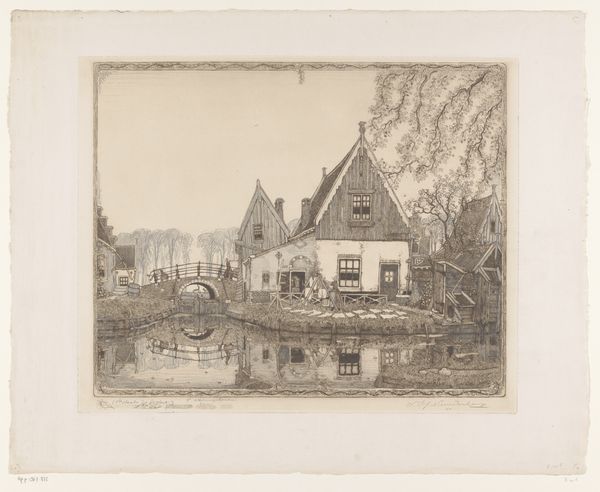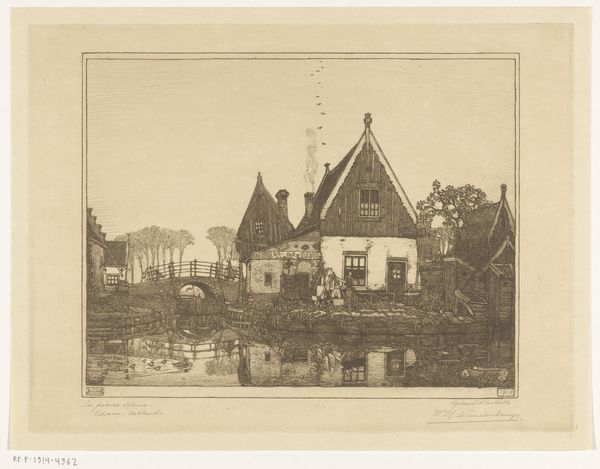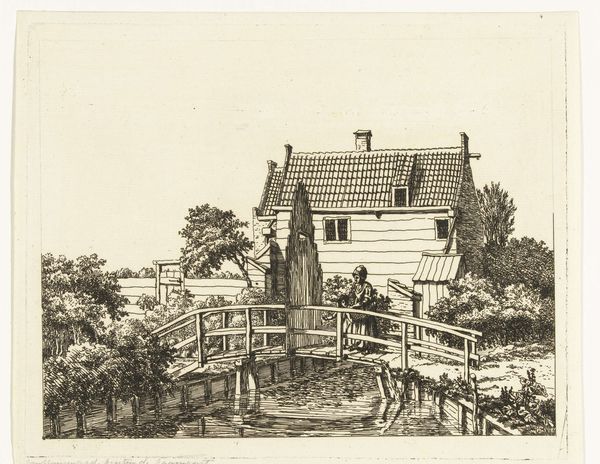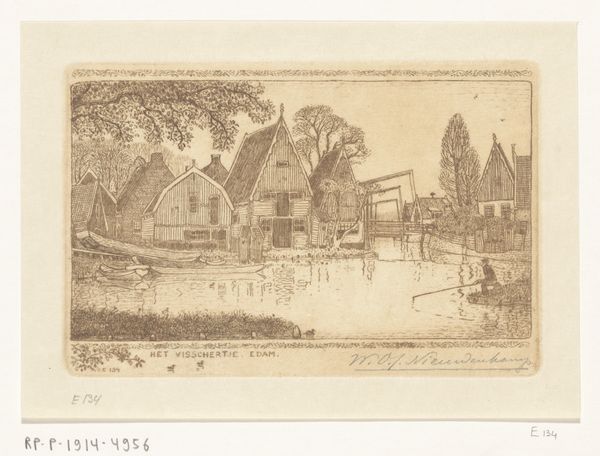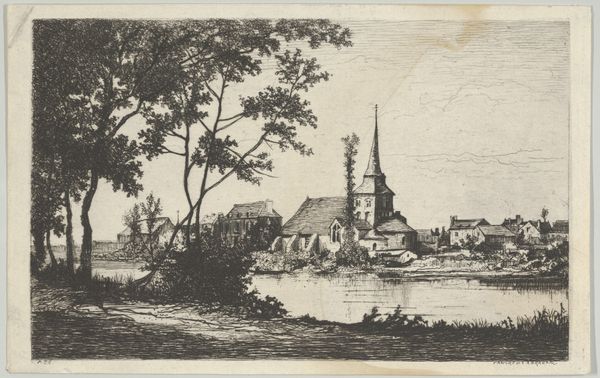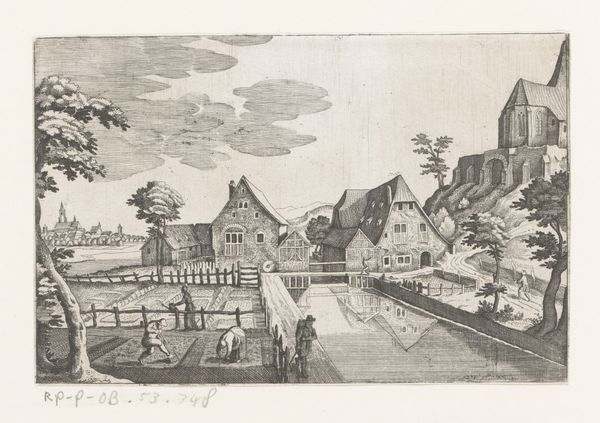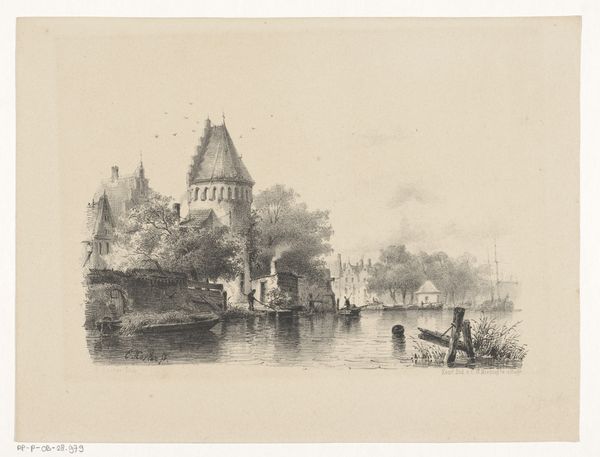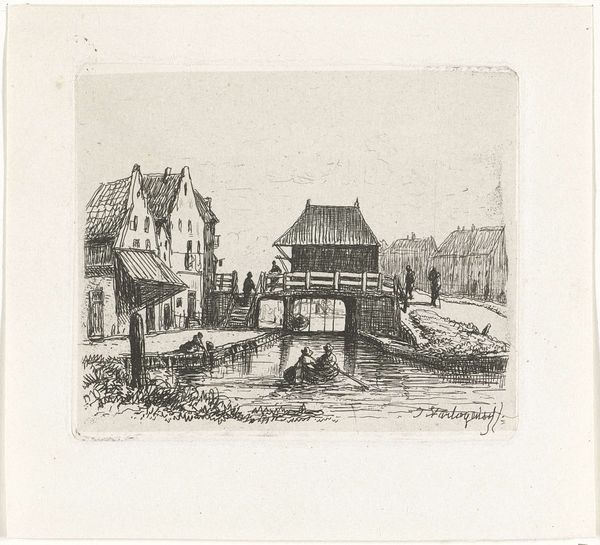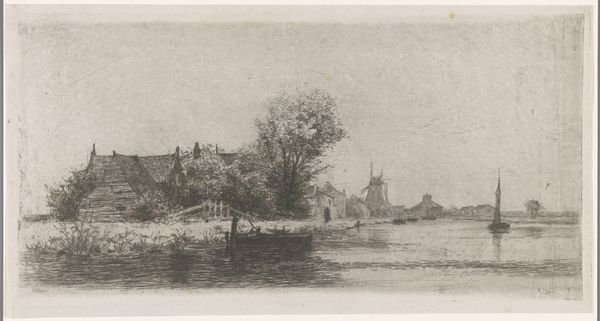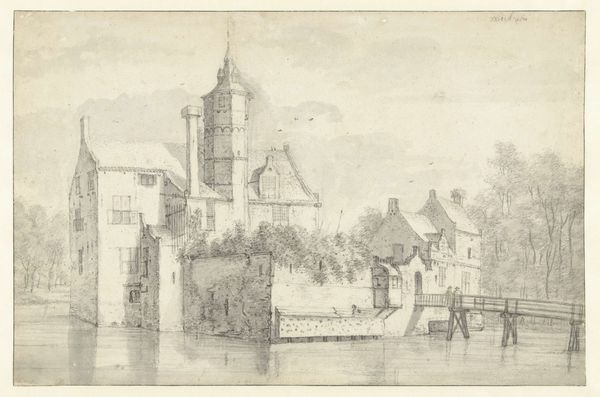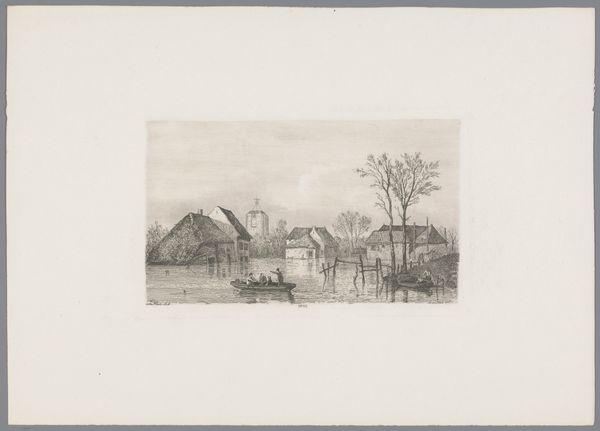
print, etching, intaglio
#
dutch-golden-age
# print
#
etching
#
intaglio
#
old engraving style
#
landscape
#
geometric
#
cityscape
#
watercolor
#
realism
Dimensions: height 397 mm, width 490 mm
Copyright: Rijks Museum: Open Domain
Editor: This is "Het aardige sluisje. Edam," a 1914-1916 etching by Wijnand Otto Jan Nieuwenkamp. The intricate detail in the reflections immediately caught my eye. What elements stand out to you within its composition? Curator: Note how Nieuwenkamp uses a sophisticated network of lines to create variations in texture and tone. Consider the relationship between the density of lines and the creation of depth. Where do your eyes focus and why? Editor: I'm drawn to the sharp contrast between the detailed buildings and their almost blurry reflections in the water. Is that a conscious choice, emphasizing realism or something else? Curator: Realism is too simple a term. Observe the interplay between light and shadow; the texture of the buildings and the foliage. These are not mere representations, but carefully constructed arrangements to create visual interest. Editor: So you’re suggesting the accuracy is secondary to the structural elements themselves? Curator: Precisely. Nieuwenkamp manipulates our perception through formal means. How do the geometric shapes of the buildings interact with the more organic forms of the natural world? Note, too, the placement of the horizon line. Editor: I see, by examining the contrast and formal structure, we can decode the artwork's internal dynamics and perhaps move beyond literal representation. Curator: Indeed. Art becomes more than what is pictured, it is how it is pictured. Analyzing its inherent qualities brings its true meaning to light.
Comments
No comments
Be the first to comment and join the conversation on the ultimate creative platform.

